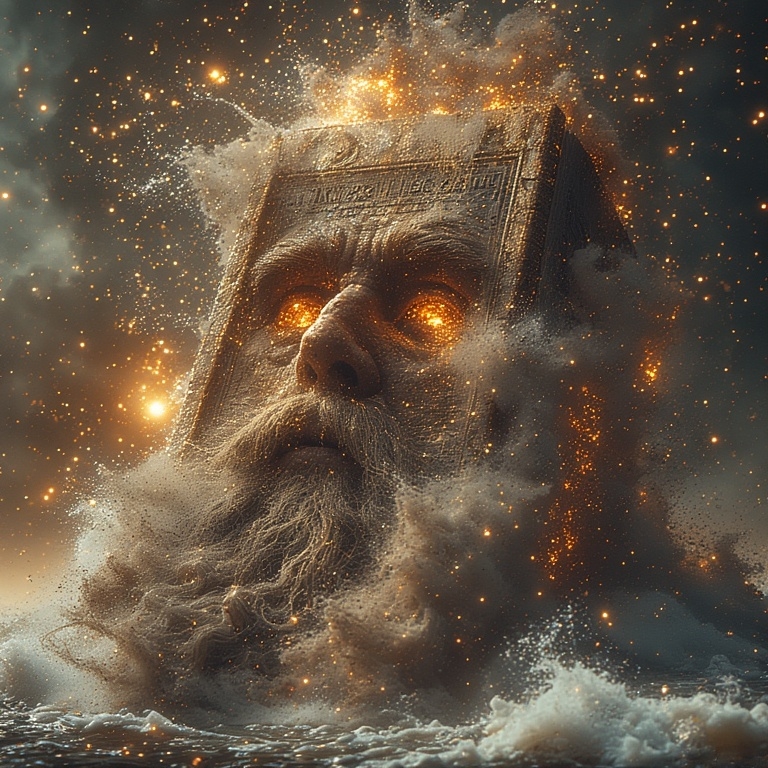How Amazing Books Become Powerful Screenplay Blockbusters
Amazing Books – From Page to Screen
The Mechanics and Psychology of Book Adaptations
Adapting a book into a film or television series is not a simple act of replication. It is a layered transformation that reinterprets narrative, character, and theme through the lens of visual storytelling. The process begins long before cameras roll. It starts with legal negotiations, creative restructuring, and strategic planning. A novel may span hundreds of pages, filled with internal monologue, nonlinear timelines, and symbolic motifs. A screen adaptation must distill that complexity into a format governed by time constraints, visual rhythm, and audience expectation. The viewer does not consume the same story—they experience a reimagined version shaped by cinematic language and emotional pacing.

Rights Acquisition and Intellectual Ownership
Before any creative work begins, producers must secure the legal rights to adapt a book. This typically involves an option agreement, which grants exclusive access to the intellectual property for a defined period—often 12 to 24 months. During this time, the producer can develop the project but cannot release it. If the adaptation moves forward, the producer exercises the option and pays a negotiated purchase fee.
These agreements may include clauses for sequels, spin-offs, merchandising, and international distribution. Some authors retain creative input, while others delegate full control. The legal framework defines the boundaries of adaptation—what can be changed, what must be preserved, and how the original author is credited. Without proper clearance, studios risk litigation and reputational damage. This foundational stage is invisible to audiences but critical to every decision that follows.
TV Shows And Movies
Screenplay Development and Narrative Compression
Turning a novel into a screenplay requires more than trimming pages. It demands a complete restructuring of narrative logic. Novels often rely on internal monologue, layered exposition, and nonlinear storytelling. Screenplays must externalize emotion, simplify structure, and maintain momentum. Dialogue replaces introspection. Scenes are merged, relocated, or removed entirely. Characters may be rewritten or eliminated to streamline the plot.
The goal is not to replicate the book but to translate its emotional architecture into a visual format. Screenwriters identify the core narrative and reshape it to fit episodic or cinematic pacing. This process involves symbolic decisions—what themes to emphasize, which arcs to preserve, and how to maintain coherence across visual scenes. The result is a new structure that echoes the original but functions independently.

Casting and Character Reinterpretation
Casting is one of the most visible and emotionally charged aspects of adaptation. It is not merely about physical resemblance. It is about emotional fit, symbolic resonance, and audience connection. Actors bring their own energy, history, and interpretation to a role. This can shift the tone of a character dramatically. A reserved protagonist in print may become charismatic or volatile on screen. Casting decisions influence genre, pacing, and demographic reach. They also affect marketing strategy and audience expectation. The character as written is a blueprint. The actor’s performance completes the transformation. This reinterpretation is often controversial, especially when it challenges visual stereotypes or cultural assumptions. But it is essential to the adaptation’s emotional impact.
Visual Design and Worldbuilding
Books describe. Films and television depict. Production design translates textual descriptions into tangible environments. This includes set construction, costume design, lighting, and color palette. These elements shape mood, genre, and thematic clarity. A dystopian novel may become visually sleek or gritty depending on design choices. Worldbuilding is not decorative—it is narrative. It guides the viewer’s emotional response and contextual understanding. Every visual element must serve the story’s core message. Designers work closely with directors and cinematographers to ensure coherence across scenes. The goal is to create a world that feels immersive, symbolic, and emotionally resonant. This process often involves historical research, cultural consultation, and architectural modeling.
Pacing and Structural Adjustments
Books allow for slow builds, reflective pauses, and layered subplots. Screen adaptations require momentum, clarity, and rhythmic precision. Pacing is adjusted to maintain engagement across episodes or within a two-hour runtime. Scenes are reordered to create tension. Cliffhangers are inserted to sustain interest. Exposition is minimized or embedded in dialogue. The structure must support visual flow and emotional escalation. This often means abandoning the book’s chronology. Flashbacks, parallel timelines, or condensed arcs may be introduced. These changes are not distortions. They are adaptations to a different medium’s demands. The goal is to preserve emotional truth while reshaping narrative form.
Dialogue and Language Translation
Written dialogue often carries a rhythm and density that does not translate directly to screen. In novels, characters may speak in extended monologues, internal reflections, or stylized prose. On screen, dialogue must feel natural, purposeful, and emotionally charged. It must reveal character, advance plot, and resonate with the audience in real time. Screenwriters often strip away literary flourishes to focus on cadence, subtext, and timing. Internal thoughts are externalized through conversation, gesture, or silence. The challenge lies in preserving the emotional truth of the original while adapting its form to suit performance. Language must be lean but layered, accessible but symbolic. Every word spoken on screen carries visual weight and narrative consequence.
How Amazing Books Become Powerful Screenplay Blockbusters
Genre Shifts and Tonal Reframing
Adaptations often shift genre or tone to align with market trends, audience demographics, or directorial vision. A literary drama may become a romantic thriller. A historical epic may be reframed as speculative fiction. These shifts are not arbitrary—they reflect strategic decisions about pacing, visual style, and emotional accessibility. Tonal reframing allows producers to emphasize different aspects of the source material. Humor may be amplified, darkness may be softened, or ambiguity may be clarified. These changes affect casting, design, and marketing. They also reshape audience expectation. The adaptation must still honor the core emotional arc of the original, even if its genre identity evolves.

Episodic vs. Cinematic Structure
Books adapted for television face different structural demands than those adapted for film. Episodic formats require cliffhangers, character arcs that span multiple episodes, and thematic layering across seasons. Films must resolve their narrative within a fixed runtime, often two hours or less. This affects how the story is broken down, which subplots are retained, and how characters evolve. Television allows for deeper exploration of secondary characters, slower pacing, and more complex worldbuilding. Film demands compression, clarity, and emotional immediacy. The choice between episodic and cinematic format is often dictated by the book’s length, complexity, and thematic density.
Symbolic Translation and Visual Metaphor
Books often rely on symbolic language, recurring motifs, and abstract themes. Translating these into visual metaphor requires creative reinterpretation. A recurring image in prose may become a visual motif—a color, object, or gesture repeated across scenes. Symbolic translation is not literal. It is emotional. It must evoke the same psychological response as the original, even if the form changes. Directors and designers collaborate to embed these metaphors into the visual fabric of the adaptation. Lighting, framing, and sound design all contribute. The goal is to preserve the symbolic resonance of the book while adapting it to a sensory medium.
Audience Memory and Emotional Expectation
Audiences approach adaptations with emotional memory. They remember how the book made them feel—its tone, rhythm, and psychological impact. The adaptation must honor that memory while offering something new. This is a delicate negotiation. If the adaptation diverges too far, it risks alienation. If it mirrors the book too closely, it may feel redundant. Success lies in emotional resonance, not literal fidelity. The adaptation must evoke the same psychological landscape, even if the narrative structure shifts. Audience expectation is shaped by casting, trailers, and genre cues. Managing that expectation is part of the adaptation’s emotional architecture.
Cultural Context and Localization
Books often reflect specific cultural, historical, or linguistic contexts. Adaptations may localize these elements to suit different audiences. A British novel may be adapted for American television. A Japanese manga may become a global streaming series. Localization involves adjusting dialogue, setting, and cultural references. It also requires sensitivity to symbolism, tradition, and audience familiarity. These changes must preserve the story’s emotional core while making it accessible across borders. Cultural context shapes how characters are perceived, how themes are interpreted, and how visual cues are received. Localization is not dilution—it is translation across symbolic systems.
Author Involvement and Creative Control
Some authors are deeply involved in the adaptation process. Others choose to step back. Authorial involvement can influence tone, fidelity, and thematic emphasis. When authors collaborate with screenwriters, they may help preserve symbolic clarity or emotional nuance. When they relinquish control, the adaptation becomes a reinterpretation guided by new creative voices. This dynamic affects how the adaptation is received. Audiences often look for signs of authorial approval or disapproval. Creative control is negotiated during rights acquisition and may evolve during production. The balance between authorial vision and directorial interpretation shapes the final product.
Marketing, Framing, and Audience Positioning
Adaptations are marketed not just as stories but as cultural events. Trailers, posters, interviews, and promotional campaigns frame the adaptation’s tone, genre, and emotional promise. Marketing decisions influence audience expectation and critical reception. They also affect demographic reach and international appeal. A literary drama may be marketed as a romance to attract a broader audience. A fantasy epic may be framed as a political allegory. These choices shape how viewers approach the adaptation and what they expect to feel. Marketing is not separate from storytelling—it is part of the adaptation’s symbolic architecture.
Reception, Critique, and Legacy
Once released, adaptations enter the public domain of critique and emotional response. Viewers compare them to the source material, assess their emotional impact, and debate their fidelity. Critical reception may focus on performance, pacing, design, or thematic clarity. Audience response is shaped by memory, expectation, and cultural context. Some adaptations become iconic, reshaping how the original is remembered. Others fade, leaving the book untouched. Legacy is built not just on quality but on resonance. An adaptation that captures the emotional truth of the original can redefine its cultural footprint.
Adaptation as Interpretation
Every adaptation is an act of interpretation. It reflects not only the source material but the vision of the director, the tone of the screenplay, and the emotional priorities of the production team. This interpretation is shaped by cultural context, genre conventions, and audience expectation. The adaptation may emphasize themes that were subtle in the book or reframe character arcs to suit visual pacing. It is not a copy—it is a commentary. The screen version becomes a lens through which the original is re-experienced. This interpretive layer adds depth, complexity, and sometimes controversy. It invites viewers to engage with the story in new ways, to question assumptions, and to explore alternate emotional landscapes.

Fidelity vs. Resonance
The debate over fidelity often dominates discussions of adaptation. Some viewers demand strict adherence to plot, character, and tone. Others value emotional resonance over literal accuracy. Fidelity is not a binary—it is a spectrum. An adaptation may preserve the emotional truth of the book while altering its structure. It may retain symbolic motifs while changing character dynamics. Resonance matters more than replication. The goal is to evoke the same psychological response, even if the path is different. Fidelity should be measured not by scene-by-scene comparison but by thematic integrity and emotional impact.
Adaptation as Cultural Dialogue
Adaptations do not exist in isolation. They become part of a broader cultural dialogue. They influence how stories are remembered, how characters are interpreted, and how themes are debated. A successful adaptation can elevate a book’s visibility, expand its audience, and reshape its legacy. It can also spark conversations about representation, genre, and narrative ethics. Adaptations reflect the values of their time—their casting choices, visual style, and thematic emphasis all speak to contemporary concerns. They are not just entertainment. They are cultural artifacts that participate in ongoing symbolic exchange.
Conclusion
Book adaptations are complex, multi-layered transformations that require legal precision, creative reinterpretation, and emotional intelligence. They are not mere translations—they are reconstructions shaped by visual rhythm, audience psychology, and symbolic clarity. The process involves rights acquisition, narrative compression, casting, design, and pacing. Each stage reshapes the original into a new sensory experience. Success lies not in replication but in resonance. The adaptation must evoke the emotional truth of the book while functioning as a standalone work. It must honor memory, manage expectation, and invite reinterpretation. Whether cinematic or episodic, faithful or reimagined, adaptations are living systems—bridges between literary architecture and visual immersion.
Join the Discussion
What adaptation has stayed with you emotionally, even if it diverged from the book? Which screen version deepened your understanding of the original story—or challenged it?
#BookAdaptation #Screenwriting #NarrativeTransformation #VisualStorytelling #SymbolicArchitecture #CastingChoices #CulturalDialogue #EmotionalResonance #AdaptationMechanics #FromPageToScreen #EditorialClarity #StorytellingEthics #FidelityVsResonance #Worldbuilding #CreativeReconstruction







